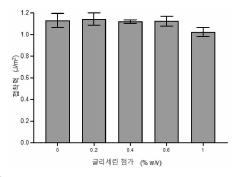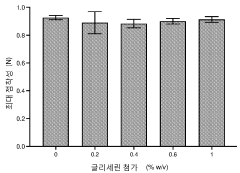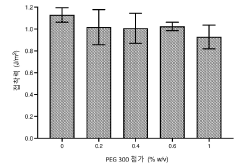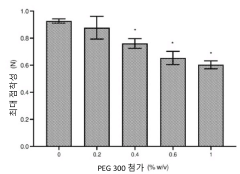Hypertonic Solutions: Technological Advances in Drug Delivery
Hypertonic Drug Delivery Background and Objectives
Hypertonic drug delivery has emerged as a promising approach in the field of pharmaceutical sciences, offering innovative solutions to enhance drug efficacy and targeted delivery. The concept of utilizing hypertonic solutions for drug delivery has its roots in the fundamental principles of osmosis and cellular physiology. Over the past few decades, researchers have made significant strides in understanding and harnessing the potential of hypertonic environments to improve drug absorption, distribution, and overall therapeutic outcomes.
The evolution of hypertonic drug delivery systems can be traced back to early observations of osmotic effects on cellular membranes. As scientific understanding of cell biology and membrane transport mechanisms advanced, researchers began to explore the possibility of leveraging osmotic gradients to facilitate drug uptake and distribution. This led to the development of various hypertonic formulations and delivery platforms, each designed to exploit specific physiological responses to hyperosmotic conditions.
The primary objective of hypertonic drug delivery is to enhance the bioavailability and efficacy of therapeutic agents by creating an osmotic gradient that promotes drug absorption and cellular uptake. This approach aims to overcome limitations associated with traditional drug delivery methods, such as poor solubility, limited permeability, and rapid clearance from the body. By manipulating the osmotic environment, hypertonic solutions can potentially improve drug penetration across biological barriers, increase residence time at the target site, and achieve more controlled release profiles.
Recent technological advances in this field have focused on developing sophisticated hypertonic formulations that can be tailored to specific drug molecules and therapeutic targets. These innovations include the design of smart osmotic systems that respond to environmental cues, the incorporation of permeation enhancers to further boost drug absorption, and the integration of nanotechnology to create hybrid hypertonic-nanoparticle delivery platforms.
The potential applications of hypertonic drug delivery span a wide range of therapeutic areas, including but not limited to ocular drug delivery, transdermal drug administration, and targeted delivery to specific organs or tissues. As research in this field continues to progress, there is growing interest in exploring the synergistic effects of combining hypertonic solutions with other advanced drug delivery technologies, such as liposomes, hydrogels, and stimuli-responsive polymers.
Looking ahead, the field of hypertonic drug delivery faces both exciting opportunities and significant challenges. While the fundamental principles underlying this approach are well-established, there is still much to be learned about optimizing hypertonic formulations for different types of drugs and therapeutic indications. Future research directions are likely to focus on enhancing the specificity and controllability of hypertonic delivery systems, minimizing potential side effects, and developing novel applications in emerging areas of medicine, such as gene therapy and personalized medicine.
Market Analysis for Hypertonic Drug Delivery Systems
The market for hypertonic drug delivery systems has experienced significant growth in recent years, driven by the increasing prevalence of chronic diseases and the demand for more effective drug administration methods. This market segment is characterized by its ability to enhance drug absorption and improve therapeutic outcomes, particularly in areas such as ocular, pulmonary, and nasal drug delivery.
The global hypertonic drug delivery systems market is projected to expand at a compound annual growth rate (CAGR) of over 7% from 2021 to 2026. This growth is attributed to several factors, including the rising geriatric population, advancements in drug formulation technologies, and the increasing adoption of targeted drug delivery approaches.
North America currently holds the largest market share, followed by Europe and Asia-Pacific. The dominance of North America can be attributed to the presence of well-established healthcare infrastructure, high healthcare expenditure, and a strong focus on research and development activities. However, the Asia-Pacific region is expected to witness the fastest growth during the forecast period, driven by improving healthcare facilities, increasing healthcare awareness, and rising disposable incomes.
Key market segments within hypertonic drug delivery systems include ocular, pulmonary, nasal, and others. The ocular segment currently dominates the market, owing to the high prevalence of eye disorders and the effectiveness of hypertonic solutions in treating conditions such as dry eye syndrome. The pulmonary segment is anticipated to show substantial growth, fueled by the increasing incidence of respiratory diseases and the advantages of hypertonic solutions in improving mucociliary clearance.
The market is characterized by the presence of both established pharmaceutical companies and innovative start-ups. Major players are focusing on strategic collaborations, mergers and acquisitions, and product innovations to maintain their competitive edge. Additionally, there is a growing trend towards the development of combination products that integrate hypertonic solutions with other drug delivery technologies to enhance therapeutic efficacy.
Challenges in the market include regulatory hurdles, the high cost of research and development, and potential side effects associated with hypertonic solutions. However, ongoing technological advancements and increasing investments in healthcare infrastructure are expected to create lucrative opportunities for market growth.
In conclusion, the hypertonic drug delivery systems market shows promising growth potential, driven by technological innovations, increasing disease burden, and the need for more efficient drug delivery methods. As research continues to unveil new applications and formulations, this market segment is poised for further expansion and diversification in the coming years.
Current Challenges in Hypertonic Solution Development
Despite significant advancements in hypertonic solutions for drug delivery, several challenges persist in their development and application. One of the primary obstacles is maintaining the stability of the hypertonic solution over extended periods. The high concentration of solutes in these solutions can lead to precipitation or crystallization, potentially altering the solution's efficacy and safety profile. This instability issue is particularly pronounced in solutions containing complex drug molecules or multiple active ingredients.
Another critical challenge lies in controlling the osmotic effects of hypertonic solutions on biological tissues. While the hyperosmotic nature of these solutions is key to their drug delivery mechanism, it can also cause local tissue irritation, pain, or damage at the administration site. Balancing the osmotic gradient to maximize drug absorption while minimizing adverse effects remains a significant hurdle for researchers and formulators.
The biocompatibility of hypertonic solutions presents an ongoing challenge, especially for parenteral applications. The high solute concentration can potentially disrupt cellular functions or cause hemolysis when introduced into the bloodstream. Developing hypertonic formulations that are both effective for drug delivery and safe for systemic administration requires extensive research and careful consideration of the solution's composition.
Scalability and manufacturing consistency pose additional challenges in hypertonic solution development. Ensuring uniform distribution of solutes and maintaining precise osmolality across large-scale production batches can be technically demanding. This is particularly true for solutions containing multiple components or those requiring specialized mixing techniques to achieve the desired hypertonic state.
Furthermore, the regulatory landscape surrounding hypertonic solutions for drug delivery is complex and evolving. Demonstrating the safety and efficacy of these formulations often requires extensive preclinical and clinical studies, with particular attention to their unique physicochemical properties and physiological effects. Meeting regulatory requirements while innovating in this space can be both time-consuming and resource-intensive for pharmaceutical companies.
Lastly, optimizing the pharmacokinetics and biodistribution of drugs delivered via hypertonic solutions remains an active area of research. The altered physiological environment created by these solutions can significantly impact drug absorption, distribution, and elimination profiles. Developing predictive models and in vitro-in vivo correlations for hypertonic drug delivery systems is challenging but essential for advancing this technology.
Existing Hypertonic Solution Formulations
01 Hypertonic solutions for enhanced drug delivery
Hypertonic solutions are used to enhance drug delivery by creating an osmotic gradient that facilitates the movement of drugs across biological membranes. This approach can improve the absorption and distribution of therapeutic agents, particularly in areas with limited blood supply or in specific tissue types.- Hypertonic solutions for enhanced drug delivery: Hypertonic solutions are used to improve drug delivery by creating an osmotic gradient that enhances the absorption and distribution of therapeutic agents. These solutions can increase the permeability of biological membranes, allowing for better penetration of drugs into target tissues. This approach is particularly useful for delivering drugs across barriers such as the blood-brain barrier or for improving topical drug absorption.
- Controlled release systems using hypertonic solutions: Hypertonic solutions are incorporated into controlled release drug delivery systems to modulate the release rate of active pharmaceutical ingredients. The osmotic pressure generated by these solutions can be used to drive the release of drugs from specialized formulations or devices. This approach allows for sustained and targeted drug delivery, potentially improving therapeutic efficacy and reducing side effects.
- Hypertonic solutions for ocular drug delivery: In ocular drug delivery, hypertonic solutions are utilized to enhance the penetration of drugs through the cornea and other ocular tissues. These solutions can increase the residence time of drugs on the ocular surface and improve their absorption, leading to better therapeutic outcomes for various eye conditions. This approach is particularly beneficial for treating diseases of the anterior and posterior segments of the eye.
- Nasal drug delivery using hypertonic solutions: Hypertonic solutions are employed in nasal drug delivery systems to enhance the absorption of drugs through the nasal mucosa. These solutions can temporarily open tight junctions between cells, facilitating the paracellular transport of drugs. This method is particularly useful for delivering peptides, proteins, and other large molecules that typically have poor bioavailability when administered orally.
- Hypertonic solutions in transdermal drug delivery: In transdermal drug delivery, hypertonic solutions are used to enhance the permeation of drugs through the skin. These solutions can create a concentration gradient that drives drug diffusion and can also cause osmotic effects that improve drug absorption. This approach is particularly useful for delivering small molecule drugs and some macromolecules across the skin barrier, potentially offering an alternative to oral or injectable administration.
02 Nasal drug delivery using hypertonic solutions
Hypertonic solutions are employed in nasal drug delivery systems to enhance the absorption of drugs through the nasal mucosa. This method can improve bioavailability and onset of action for various medications, including those for treating neurological disorders or providing systemic effects.Expand Specific Solutions03 Ocular drug delivery with hypertonic formulations
Hypertonic solutions are utilized in ocular drug delivery to enhance the penetration of drugs through the cornea and other ocular tissues. This approach can improve the efficacy of treatments for various eye conditions by increasing drug residence time and absorption.Expand Specific Solutions04 Hypertonic solutions for transdermal drug delivery
Hypertonic formulations are applied in transdermal drug delivery systems to enhance the permeation of drugs through the skin. This method can improve the absorption of both hydrophilic and lipophilic drugs, potentially increasing their therapeutic efficacy and reducing systemic side effects.Expand Specific Solutions05 Pulmonary drug delivery using hypertonic solutions
Hypertonic solutions are employed in pulmonary drug delivery systems to enhance the absorption of drugs through the lung epithelium. This approach can improve the efficacy of inhaled medications for respiratory conditions and may also facilitate systemic drug delivery via the lungs.Expand Specific Solutions
Key Players in Hypertonic Drug Delivery Industry
The field of hypertonic solutions for drug delivery is in a growth phase, with increasing market size and technological advancements. The global market for this technology is expanding due to its potential in improving drug efficacy and patient compliance. Technological maturity varies across different applications, with some areas more developed than others. Companies like DURECT Corp., Intarcia Therapeutics, and Amgen are leading innovation in this space, focusing on sustained-release formulations and targeted delivery systems. Academic institutions such as The Johns Hopkins University and The University of Hong Kong are contributing to fundamental research, while pharmaceutical giants like Pfizer and Sun Pharma are leveraging their resources to develop commercial applications. The competitive landscape is diverse, with both established players and emerging startups vying for market share and technological breakthroughs.
DURECT Corp.
Intarcia Therapeutics, Inc.
Innovative Approaches in Hypertonic Drug Delivery
- The development of novel drug delivery systems utilizing nanoparticle-based carriers, liposomal formulations, micellar systems, hydrogel-based systems, and stimuli-responsive materials to enhance drug solubility, stability, targeting, and release kinetics, enabling precise and sustained delivery of therapeutic agents.
- A hypotonic gel-forming composition with low molecular weight polyethylene glycol (PEG) is added to improve viscosity and reduce adhesion, forming a uniform gel on the ocular surface for sustained drug release, using polymers like PLURONIC® F127, which maintains low viscosity for comfort and lubrication.
Regulatory Framework for Hypertonic Drug Delivery
The regulatory framework for hypertonic drug delivery systems is a complex and evolving landscape that plays a crucial role in the development, approval, and commercialization of these innovative therapeutic approaches. Regulatory bodies such as the U.S. Food and Drug Administration (FDA) and the European Medicines Agency (EMA) have established specific guidelines and requirements for hypertonic solutions used in drug delivery.
These regulatory frameworks typically address several key aspects of hypertonic drug delivery systems. Safety considerations are paramount, with regulatory bodies requiring extensive preclinical and clinical studies to demonstrate the safety profile of hypertonic solutions and their potential impact on physiological processes. Efficacy evaluations are equally important, focusing on the ability of hypertonic solutions to enhance drug delivery and improve therapeutic outcomes compared to conventional formulations.
Quality control and manufacturing standards are also critical components of the regulatory framework. Manufacturers must adhere to Good Manufacturing Practices (GMP) and implement robust quality management systems to ensure the consistency and purity of hypertonic solutions. This includes stringent controls on osmolality, pH, and other physicochemical properties that are crucial for the performance and safety of these drug delivery systems.
The regulatory pathway for hypertonic drug delivery systems often depends on the specific application and the nature of the active pharmaceutical ingredient. In some cases, these systems may be classified as combination products, requiring a coordinated review process that involves multiple regulatory divisions. This can add complexity to the approval process but also ensures a comprehensive evaluation of the product's safety and efficacy.
Regulatory agencies have also recognized the potential of hypertonic solutions in addressing unmet medical needs, particularly in areas such as ocular drug delivery and treatment of certain respiratory conditions. As a result, some hypertonic drug delivery systems may qualify for expedited review processes or special designations that can accelerate their path to market.
As the field of hypertonic drug delivery continues to advance, regulatory frameworks are likely to evolve to keep pace with technological innovations. This may include the development of new guidance documents, the refinement of existing regulations, and increased collaboration between regulatory agencies and industry stakeholders to address emerging challenges and opportunities in this dynamic field.
Safety and Efficacy Considerations
The safety and efficacy of hypertonic solutions for drug delivery are paramount considerations in their development and application. These solutions, characterized by their higher solute concentration compared to physiological fluids, offer unique advantages in drug delivery but also present specific challenges.
Safety considerations primarily revolve around the potential for osmotic effects on tissues and cells. The high osmolarity of hypertonic solutions can lead to rapid fluid shifts, potentially causing cellular dehydration or tissue damage if not carefully controlled. This is particularly critical in sensitive areas such as the eyes, nasal passages, or when used systemically. Researchers have been focusing on developing formulations that balance the benefits of hypertonicity with minimal adverse effects on cellular integrity.
Another safety aspect is the potential for irritation or inflammation at the site of administration. Hypertonic solutions may cause temporary discomfort or local reactions, which necessitates careful formulation and delivery strategies. Recent advances have explored the use of biocompatible osmolytes and protective excipients to mitigate these effects while maintaining the desired hypertonicity.
Efficacy considerations for hypertonic solutions in drug delivery are multifaceted. One key advantage is their potential to enhance drug penetration across biological barriers. The osmotic gradient created by these solutions can facilitate the movement of drug molecules into tissues or cells, potentially improving bioavailability. This effect has been particularly promising in areas such as ocular drug delivery and transdermal applications.
The ability of hypertonic solutions to alter the local environment can also contribute to their efficacy. For instance, in wound healing applications, hypertonic solutions can help in debriding and cleansing wounds by drawing out excess fluid and potentially harmful substances. This dual action of drug delivery and environmental modification presents unique therapeutic opportunities.
However, the efficacy of hypertonic solutions can be influenced by factors such as the duration of contact with tissues and the rate of dilution by physiological fluids. Researchers are exploring various technologies to prolong the residence time of these solutions at the target site, including the development of in situ gelling systems and mucoadhesive formulations.
Recent technological advances have focused on optimizing the composition of hypertonic solutions to enhance both safety and efficacy. This includes the exploration of novel osmolytes, the incorporation of nanocarriers, and the development of responsive systems that can modulate their tonicity based on environmental cues. These innovations aim to create more targeted and controlled drug delivery systems that maximize therapeutic benefits while minimizing potential risks.



